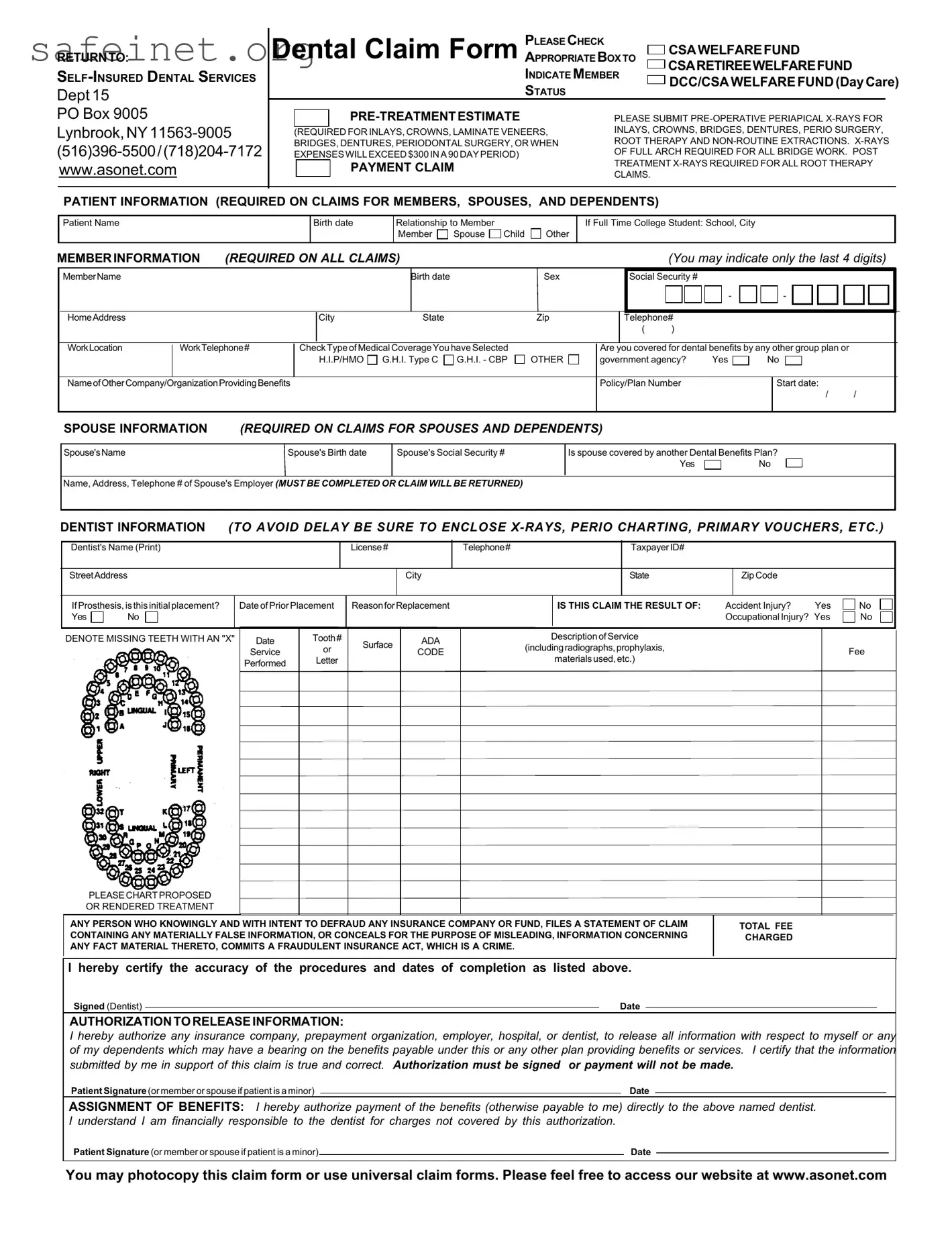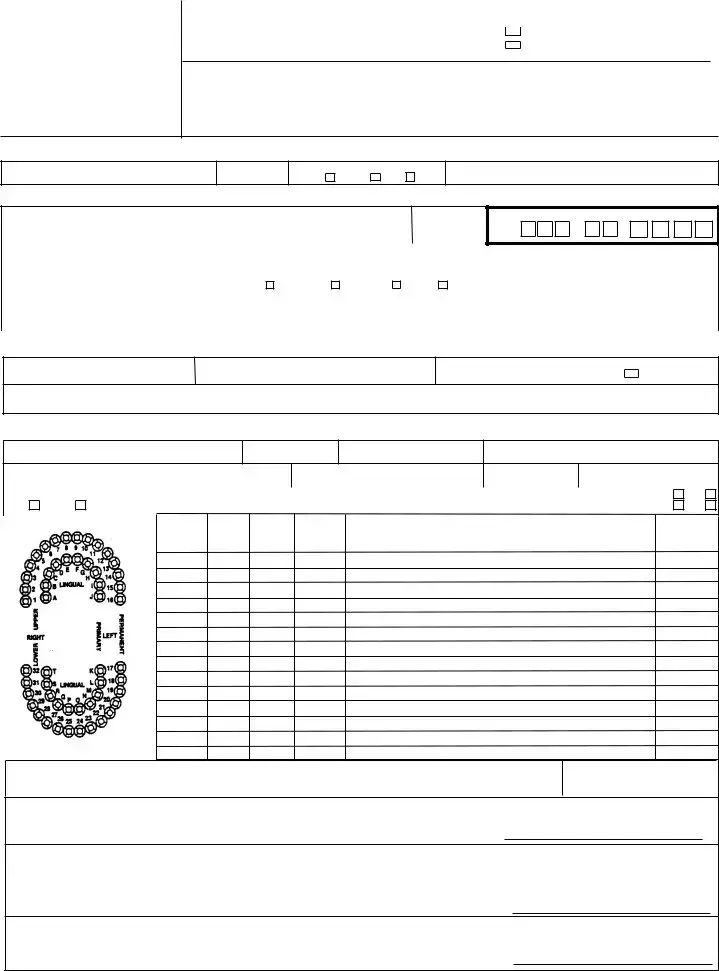The Dental Patient Information Form is similar to the CSA Dental form in its purpose of collecting essential patient details. Both forms require the patient's name, birth date, and relationship to the member, ensuring that all necessary information is gathered for verification. The forms also emphasize the importance of accurate data by including provisions for additional questions regarding insurance coverage, making it easier to process claims efficiently.
The Dental Insurance Claim Form serves a function akin to the CSA Dental form, focusing on the submission of claims for dental benefits. Both documents require specific information about the patient, member, and provider to facilitate the claims process. They necessitate the inclusion of treatment codes and the corresponding fees, helping streamline the interaction between dental offices and insurance companies.
The Pre-Treatment Estimate Request mirrors the CSA Dental form by gathering details related to proposed dental services before treatment is performed. Each form stresses the need for x-rays and treatment plans to be submitted for approval, ensuring that the predicted costs align with the administrative criteria set by the insurance provider. By requiring pre-authorization, these forms aim to minimize misunderstandings about covered services.
The Universal Claim Form has similarities with the CSA Dental form in that it can be utilized across multiple insurance providers. Like the CSA form, it collects important patient and treatment information, allowing for consistent processing of claims. The universal nature of this form means it encourages efficiency and standardization in filing claims across various health plans.
The Medical History Form is comparable to the CSA Dental form as both documents gather crucial background information regarding the patient. This information helps ensure that the dental provider understands any pre-existing conditions or past treatments that might affect the current claims process. Furthermore, both forms may refer to the patient’s eligibility for benefits under different circumstances.
The Treatment Authorization Form reflects the CSA Dental form in its purpose of documenting the need for prescribed dental services. Both require patient signatures for consent, emphasizing the importance of agreement on treatment plans and potential costs before services are rendered. This process aids in protecting both the patient and provider from future disputes related to treatment coverage.
The Patient Consent Form is similar to the CSA Dental form in that it secures approval from the patient or guardian for treatment and any necessary disclosures to insurance providers. Both documents underscore the importance of informed consent, protecting the rights of patients while ensuring that dental teams comply with legal and ethical obligations.
The Employee Benefits Enrollment Form parallels the CSA Dental form by often including dental coverage options as part of overall employee benefits. Information regarding dependents and their eligibility for benefits forms a crucial aspect of both documents. This alignment assures that all eligible family members are accounted for when filing claims or utilizing services.
The Continuity of Care Form shares similarities with the CSA Dental form in that it keeps track of ongoing treatments and required follow-ups. Both forms may request information on previous dental work and the continuing requirements for care. This type of documentation ensures that comprehensive information is available, minimizing lapses in treatment and enhancing patient outcomes.
Lastly, the Secondary Insurance Claim Form reflects aspects of the CSA Dental form in its focus on multiple insurance claims. Similar to the CSA form, it requires detailed information related to the primary and secondary coverage, ensuring that benefits are coordinated effectively across different plans. This collaboration is vital for ensuring patients receive the appropriate level of coverage for their dental services.


